Vaseline and vinegar reaction – sounds like a science experiment gone wrong, right? Well, get ready to be amazed because this unlikely duo is about to become your new secret weapon in the garden! For generations, gardeners have relied on clever hacks and time-tested tricks to nurture thriving plants. From ancient civilizations using natural fertilizers to modern-day enthusiasts experimenting with innovative techniques, the quest for a greener thumb is a timeless pursuit.
But why Vaseline and vinegar? Let’s face it, gardening can be tough. Pests, diseases, and unpredictable weather can wreak havoc on your precious plants. We all want a lush, vibrant garden without spending a fortune on expensive products or harsh chemicals. That’s where this simple, yet effective, DIY trick comes in. This Vaseline and vinegar reaction creates a barrier that protects your plants from unwanted visitors and helps to promote healthy growth. I’m excited to share this easy-to-follow guide that will transform your gardening game and help you achieve the garden of your dreams, all with just two common household items!
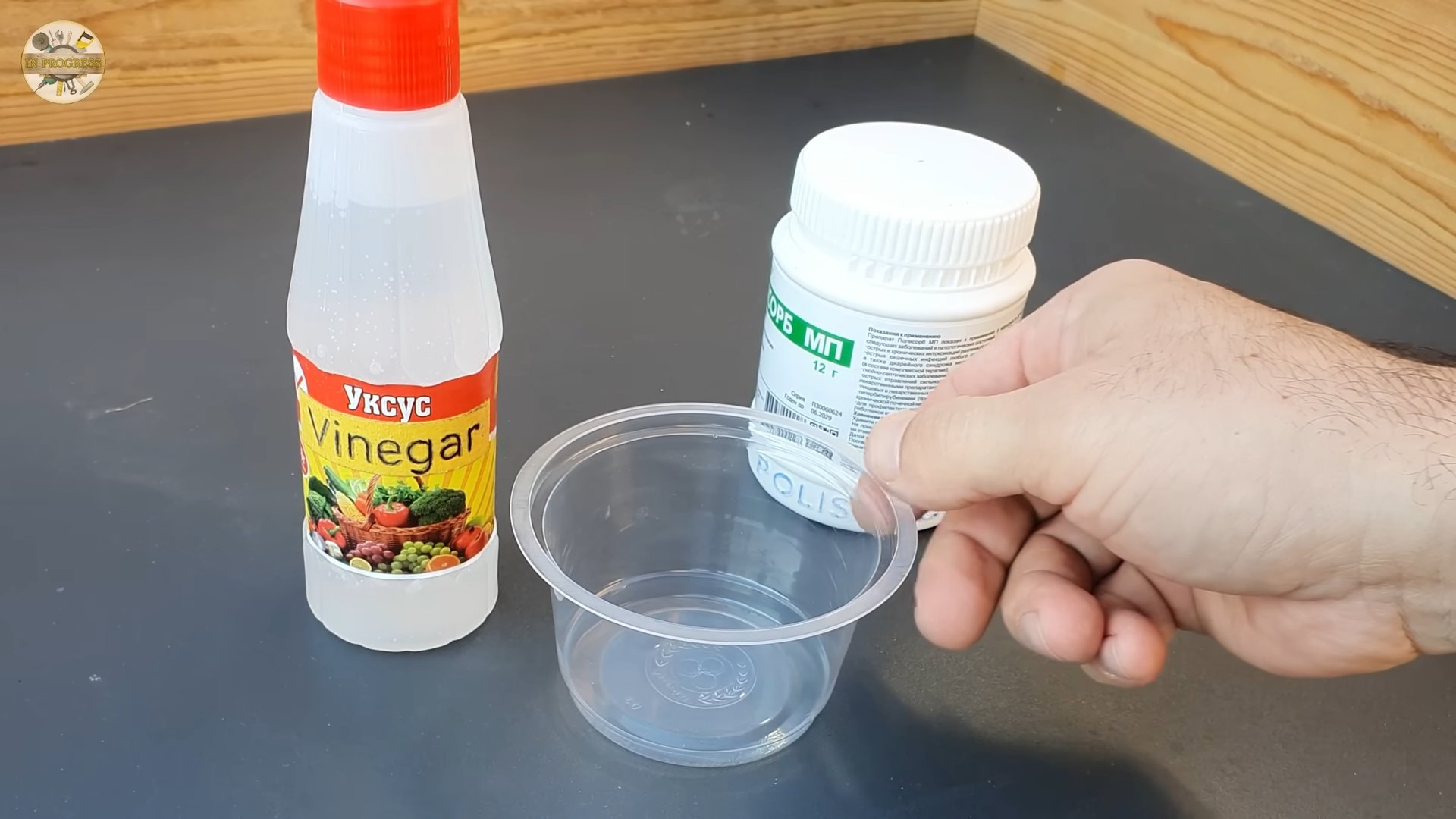
DIY Miracle Cleaner: Vaseline and Vinegar Powerhouse!
Hey everyone! I’m so excited to share this amazing DIY cleaning hack with you. I stumbled upon this combination of Vaseline and vinegar quite by accident, and let me tell you, it’s a game-changer! It’s incredibly effective, super cheap, and uses ingredients you probably already have in your home. We’re talking about a powerful cleaner that can tackle everything from stubborn water stains to restoring shine to your stainless steel.
This isn’t just about cleaning; it’s about cleaning smarter, not harder. Forget those expensive, chemical-laden cleaners. This DIY solution is gentle, effective, and kind to your wallet. So, grab your Vaseline, vinegar, and let’s get started!
What Makes This Combo So Effective?
Before we dive into the how-to, let’s quickly understand why this seemingly odd pairing works so well.
* Vaseline (Petroleum Jelly): Acts as a gentle abrasive and a protective layer. It helps to loosen grime and dirt without scratching surfaces. It also leaves a thin, protective film that can prevent future stains and water spots.
* Vinegar (Acetic Acid): A natural disinfectant and degreaser. It’s excellent at cutting through grease, dissolving mineral deposits (like hard water stains), and killing bacteria.
Together, they create a synergistic effect, making cleaning easier and more effective than using either ingredient alone.
Materials You’ll Need
Okay, let’s gather our supplies. The beauty of this hack is that you likely already have everything you need.
* Vaseline (Petroleum Jelly): Any brand will do!
* White Vinegar: Distilled white vinegar is the best choice.
* Spray Bottle: For easy application of the vinegar solution.
* Microfiber Cloths: These are essential for streak-free cleaning.
* Soft-Bristled Brush (Optional): For tackling tougher grime in corners and crevices.
* Gloves (Optional): To protect your hands, especially if you have sensitive skin.
* Small Container or Bowl: For mixing the Vaseline and vinegar (optional).
Step-by-Step Guide: The Cleaning Process
Alright, let’s get down to the nitty-gritty. Here’s how to use this Vaseline and vinegar cleaning hack to transform your home.
Section 1: Preparing the Cleaning Solution
While you can apply Vaseline and vinegar separately, I find it more efficient to create a pre-mixed solution. This ensures even distribution and makes the cleaning process smoother.
1. Prepare the Vinegar Solution: Fill your spray bottle with undiluted white vinegar. That’s it! No need to add water. The full strength of the vinegar is what we want for optimal cleaning power.
2. Optional: Mixing Vaseline and Vinegar: In a small container, scoop out about a tablespoon of Vaseline. Add a tablespoon of vinegar to the Vaseline. Mix well until you get a somewhat creamy consistency. Don’t worry if it doesn’t fully emulsify; it will still work. I often skip this step and apply them separately, but some people prefer this method.
Section 2: Cleaning Different Surfaces
Now, let’s explore how to use this cleaning solution on various surfaces around your home. Remember to always test in an inconspicuous area first, just to be safe, especially on delicate surfaces.
Cleaning Stainless Steel Appliances
Stainless steel can be a magnet for fingerprints, water spots, and smudges. This hack works wonders on refrigerators, dishwashers, ovens, and sinks.
1. Apply Vaseline: Using a clean microfiber cloth, apply a very thin layer of Vaseline to the stainless steel surface. You don’t need much! A little goes a long way.
2. Spray with Vinegar: Lightly spray the Vaseline-coated surface with the vinegar solution.
3. Wipe and Polish: Using a clean, dry microfiber cloth, wipe the surface in the direction of the grain. This will remove the Vaseline and vinegar, along with any dirt and grime. Buff the surface until it shines.
4. Repeat if Necessary: For stubborn stains or heavily soiled areas, repeat the process.
Removing Water Stains from Shower Doors and Fixtures
Hard water stains can be a real pain to remove. This Vaseline and vinegar combo is surprisingly effective.
1. Apply Vaseline: Apply a thin layer of Vaseline to the affected areas of the shower door or fixtures.
2. Spray with Vinegar: Generously spray the Vaseline-coated areas with the vinegar solution.
3. Let it Sit: Allow the solution to sit for about 10-15 minutes. This gives the vinegar time to dissolve the mineral deposits.
4. Scrub (if needed): If the stains are particularly stubborn, use a soft-bristled brush or a non-abrasive sponge to gently scrub the area.
5. Rinse Thoroughly: Rinse the surface thoroughly with water to remove any remaining Vaseline and vinegar.
6. Dry and Polish: Dry the surface with a clean microfiber cloth.
Cleaning Bathroom Sinks and Faucets
This hack is great for removing soap scum and water spots from bathroom sinks and faucets.
1. Apply Vaseline: Apply a small amount of Vaseline to the sink and faucet.
2. Spray with Vinegar: Spray the Vaseline-coated surfaces with vinegar.
3. Wipe and Rinse: Wipe the surfaces with a microfiber cloth, paying attention to areas with buildup. Rinse thoroughly with water.
4. Dry and Polish: Dry the surfaces with a clean microfiber cloth for a sparkling finish.
Polishing Chrome Fixtures
Chrome fixtures can lose their shine over time. This hack can help restore their luster.
1. Apply Vaseline: Apply a very thin layer of Vaseline to the chrome fixture.
2. Spray with Vinegar: Lightly spray the Vaseline-coated fixture with vinegar.
3. Buff to a Shine: Using a clean, dry microfiber cloth, buff the fixture until it shines.
Cleaning and Protecting Leather Surfaces (Test First!)
This is where the “test in an inconspicuous area” warning is crucial. While Vaseline can help condition leather, it’s essential to ensure it doesn’t discolor or damage the material.
1. Test Patch: Apply a tiny amount of Vaseline to a hidden area of the leather (e.g., under a cushion or on the back of a chair). Wait 24 hours to see if there are any adverse reactions.
2. Apply Vaseline (if test is successful): If the test patch is successful, apply a very thin layer of Vaseline to the leather surface.
3. Wipe with a Damp Cloth: Lightly dampen a microfiber cloth with water and wipe the Vaseline-coated surface.
4. Dry with a Clean Cloth: Dry the surface with a clean, dry microfiber cloth.
Important Note: Use this method sparingly and only on certain types of leather. Avoid using it on suede or unfinished leather.
Removing Sticky Residue
Vaseline is excellent for removing sticky residue from labels, tape, or glue.
1. Apply Vaseline: Apply a generous amount of Vaseline to the sticky residue.
2. Let it Sit: Allow the Vaseline to sit for about 5-10 minutes. This will soften the adhesive.
3. Wipe Away: Wipe away the Vaseline and the sticky residue with a clean microfiber cloth.
4. Clean with Soap and Water (if needed): If there’s any remaining residue, clean the area with soap and water.
Important Considerations and Safety Tips
Before you go wild cleaning everything in sight, here are a few important things to keep in mind:
* Always Test First: I can’t stress this enough! Always test the solution in an inconspicuous area before applying it to the entire surface. This is especially important for delicate materials like leather, painted surfaces, and certain types of plastic.
* Use Sparingly: A little Vaseline goes a long way. Using too much can leave a greasy residue that’s difficult to remove.
* Ventilation: When using vinegar, especially in enclosed spaces, make sure to have adequate ventilation.
* Avoid Mixing with Bleach: Never mix vinegar with bleach, as this can create toxic fumes.
* Storage: Store the vinegar solution in a labeled spray bottle away from children and pets.
* Not for All Surfaces: Avoid using this hack on porous surfaces like unsealed grout or natural stone, as the vinegar can damage them.
* Gloves: While not always necessary, wearing gloves can protect your hands, especially if you have sensitive skin or are cleaning for an extended period.
Troubleshooting
Sometimes, things don’t go exactly as planned. Here are a few common issues you might encounter and how to fix them:
*
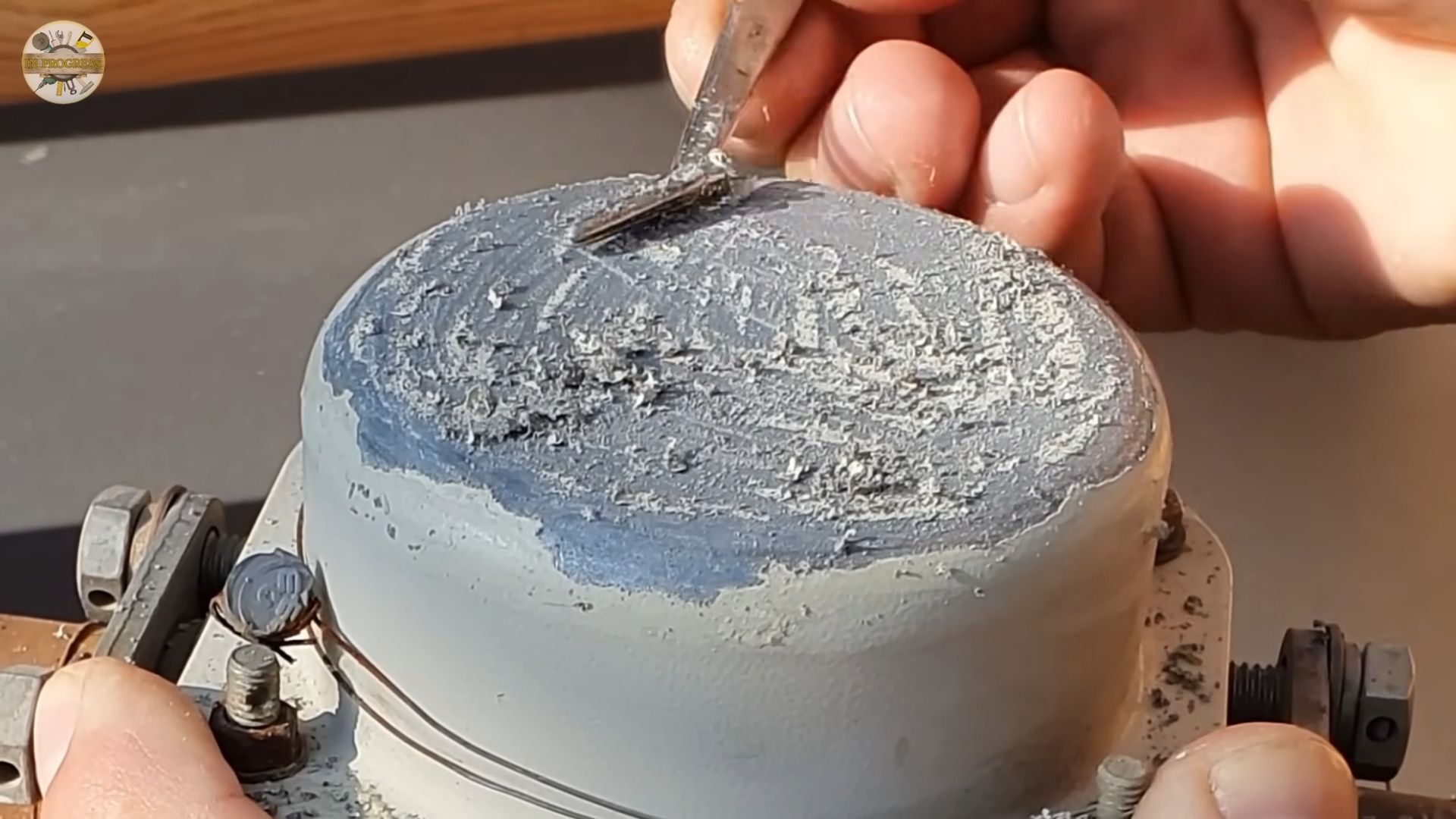
Conclusion
So, there you have it! This incredibly simple, yet surprisingly effective, DIY trick using Vaseline and vinegar is a game-changer for anyone looking to tackle stubborn stains, restore shine, or simply give their belongings a new lease on life. It’s a testament to the fact that sometimes the most powerful solutions are found in the most unassuming ingredients. Forget expensive, chemical-laden cleaners; this method is not only budget-friendly but also a gentler alternative for both your items and the environment.
Why is this a must-try? Because it works! The combination of Vaseline’s emollient properties and vinegar’s acidity creates a powerful cleaning and polishing agent that can lift grime, dissolve mineral deposits, and leave surfaces sparkling. It’s particularly effective on hard water stains, soap scum, and even tarnish on certain metals. Plus, the application is straightforward and requires minimal effort. You’ll be amazed at the results you can achieve with just these two common household items.
But don’t just take our word for it. We encourage you to experiment and discover the many applications of this dynamic duo. For instance, try adding a few drops of your favorite essential oil to the mixture for a pleasant scent. Lavender, lemon, or tea tree oil not only add fragrance but also boast their own cleaning and antibacterial properties. Another variation involves adjusting the ratio of Vaseline to vinegar depending on the severity of the stain or the type of surface you’re cleaning. For delicate surfaces, start with a higher proportion of Vaseline and gradually increase the vinegar until you achieve the desired effect. You can also use this method to restore the shine of your leather shoes or handbags. Just remember to test a small, inconspicuous area first to ensure compatibility.
This Vaseline and vinegar reaction is more than just a cleaning hack; it’s a versatile solution that can simplify your cleaning routine and save you money. It’s a testament to the power of resourcefulness and the potential hidden within everyday items.
We’re confident that once you try this DIY trick, you’ll be hooked. It’s easy, effective, and environmentally conscious – a winning combination in our book. So, grab your Vaseline, your vinegar, and get ready to witness the magic.
And most importantly, we want to hear about your experience! Share your before-and-after photos, your tips and tricks, and any variations you’ve discovered in the comments below. Let’s build a community of DIY enthusiasts who are passionate about finding simple, effective solutions to everyday problems. Your feedback will not only help others but also inspire us to continue exploring and sharing innovative ideas. Let us know what surfaces you cleaned, what stains you removed, and any unexpected uses you found for this amazing combination. We can’t wait to see what you come up with!
Frequently Asked Questions (FAQ)
What exactly does the Vaseline and vinegar mixture do?
The magic lies in the combination of Vaseline’s emollient and protective qualities with vinegar’s acidic cleaning power. Vaseline acts as a gentle abrasive and helps to loosen dirt and grime, while vinegar dissolves mineral deposits, soap scum, and other stubborn stains. The Vaseline also helps to protect the surface being cleaned, preventing it from becoming scratched or damaged. The mild acidity of the vinegar helps to break down the chemical bonds of the stain, making it easier to remove. The Vaseline then acts as a carrier, helping to lift the loosened stain away from the surface.
What surfaces can I safely use this mixture on?
This mixture is generally safe for use on a variety of surfaces, including:
* **Bathroom fixtures:** Sinks, faucets, showerheads, and tiles are all excellent candidates for this cleaning method. It’s particularly effective at removing hard water stains and soap scum.
* **Kitchen surfaces:** Countertops (excluding porous materials like marble), stainless steel appliances, and even stovetops can benefit from a Vaseline and vinegar treatment.
* **Metal objects:** Chrome, stainless steel, and even some tarnished silver can be polished with this mixture. Always test on an inconspicuous area first.
* **Leather:** Leather shoes, handbags, and furniture can be cleaned and conditioned with a diluted version of the mixture.
* **Glass:** Windows, mirrors, and glass shower doors can be cleaned streak-free with this method.
However, it’s crucial to avoid using this mixture on porous surfaces like marble, granite, or unsealed wood, as the vinegar can etch or damage these materials. Always test a small, hidden area first to ensure compatibility.
What is the ideal ratio of Vaseline to vinegar?
The ideal ratio depends on the specific application and the severity of the stain. A good starting point is a 1:1 ratio of Vaseline to vinegar. For more delicate surfaces or light cleaning, you can increase the proportion of Vaseline. For tougher stains, you can gradually increase the vinegar until you achieve the desired effect. It’s always best to start with a less concentrated mixture and increase the strength as needed.
How long should I leave the mixture on the surface before wiping it off?
The dwell time depends on the severity of the stain. For light cleaning, a few minutes may be sufficient. For tougher stains, you can leave the mixture on for up to 15-20 minutes. However, it’s important to monitor the surface and ensure that the mixture doesn’t dry out completely. If it starts to dry, you can lightly mist it with water to keep it moist.
What kind of vinegar should I use?
White distilled vinegar is the best option for cleaning purposes. It’s inexpensive, readily available, and has a consistent acidity level. Avoid using other types of vinegar, such as apple cider vinegar or balsamic vinegar, as they may contain sugars or other additives that can leave a sticky residue.
Can I add other ingredients to the mixture?
Yes, you can customize the mixture to suit your specific needs. As mentioned earlier, adding a few drops of essential oil can add a pleasant scent and boost the cleaning power. You can also add a small amount of baking soda for extra scrubbing power. However, be cautious when mixing baking soda and vinegar, as they can react and create a fizzing action.
Is this mixture safe for children and pets?
While Vaseline and vinegar are generally considered safe, it’s always best to keep cleaning products out of reach of children and pets. Avoid using this mixture in areas where children or pets may come into contact with it. If ingested, contact a medical professional or veterinarian immediately.
How do I store the leftover mixture?
Store any leftover mixture in an airtight container in a cool, dry place. It’s best to use the mixture within a few weeks, as the vinegar may evaporate over time. Label the container clearly to avoid accidental ingestion.
What if the mixture doesn’t work on a particular stain?
If the Vaseline and vinegar mixture doesn’t completely remove a stain, you may need to try a different cleaning method. For stubborn stains, you can try using a commercial cleaner specifically designed for that type of stain. You can also consult a professional cleaning service for assistance.
Can this mixture be used to remove rust?
While the Vaseline and vinegar reaction can help to loosen rust, it may not completely remove it. For rust removal, you may need to use a specialized rust remover or a more abrasive cleaning method. However, this mixture can be a good first step in the rust removal process.

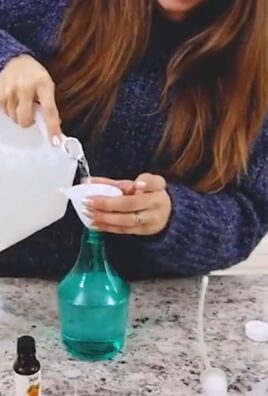
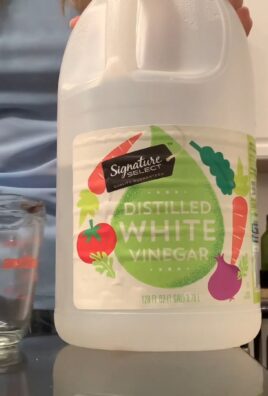
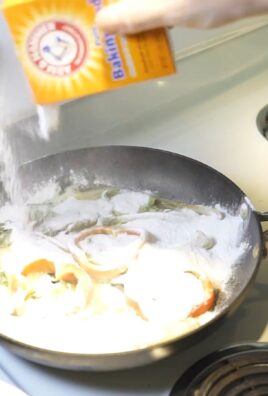
Leave a Comment